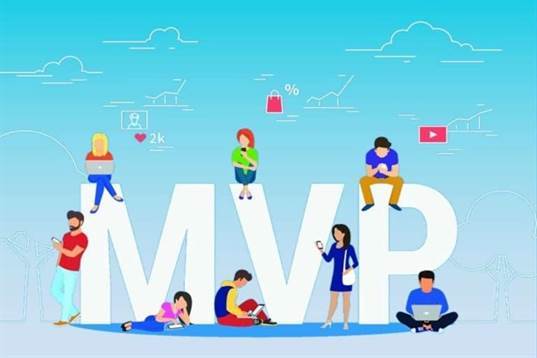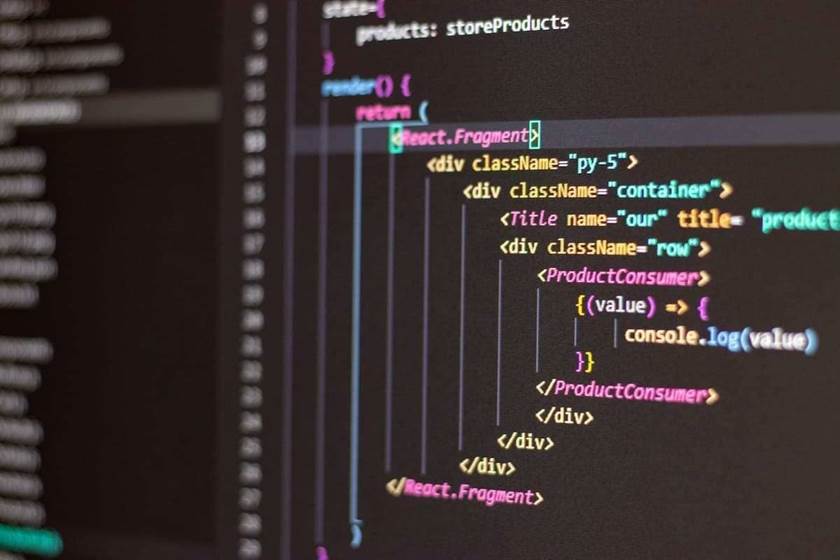Big Information Analytics: What It’s And Why It Matters
Amplitude Analytics bridges the hole between uncooked information and meaningful insights, guiding you towards a deeper understanding of your user’s journey. From healthcare to advertising, massive data analytics presents a lens into the intricate workings of our interconnected world. Ensuring data high quality through cleaning, validation, and correct information governance helps prevent incorrect evaluation and decision-making. This comprehensive analysis enables you to optimize your operations, determine inefficiencies, and scale back costs at a stage that might not be achievable with smaller datasets. Prescriptive analytics builds on predictive analytics by recommending actions to optimize future outcomes. It considers numerous possible actions and their potential impact on the anticipated occasion or end result.
This data helps create stories and visualise data that may detail company income and gross sales. The finest approach to perceive the concept behind Big Data analytics is to put it against regular data analytics. This submit will draw a full image of what Big Data analytics is and the way it works. Also, we’ll introduce you to the favored Big Data analytics tools and current use cases. And, in simply six months or much less, you’ll find a way to learn in-demand, job-ready skills like information cleaning, evaluation, and visualization with the Google Data Analytics Professional Certificate.
I consider this article has helped you perceive what is Big Data, and in case you are nonetheless curious to know extra, here’s another write-up – Is Big Data Overhyped? That dives deeper into the significance of the technology and the hype components that surround the domain. All this data is helpful when processed, but it had been in gross neglect before the idea of massive data came alongside.
Big data analytics uses advanced analytics on large collections of both structured and unstructured information to produce priceless insights for businesses. Each day, workers, supply chains, marketing efforts, finance groups, and more generate an abundance of information, too. Big data is a particularly massive volume of information and datasets that are available diverse varieties and from multiple sources. Many organizations have acknowledged the benefits of amassing as much information as potential.
Study With Careerfoundry
The more data there’s, the larger the need for diverse analytical approaches, quicker dealing with times, and a more in depth data capability. For instance, a retailer might look into how their large databases tracking every customer’s transaction over time can present a holistic understanding of every customer’s shopping for habits. Structured knowledge consists of knowledge already managed by the group in databases and spreadsheets; it’s regularly numeric in nature. Unstructured data is data that’s unorganized and does not fall into a predetermined mannequin or format.
Big data refers to large, diverse data units made up of structured, unstructured and semi-structured data. This data is generated constantly and at all times growing in dimension, which makes it too high in quantity, complexity and speed to be processed by conventional data administration techniques. Big data is used throughout almost each industry to attract insights, perform analytics, train artificial intelligence and machine studying models, as properly as assist make data-driven business decisions. Technologies corresponding to enterprise intelligence (BI) instruments and techniques help organizations take the unstructured and structured data from multiple sources.

We’ll have a look at the professionals and cons of adopting it into your technique, as well as what the means ahead for huge information analytics might be. Nurture your internal tech pro with personalized steering from not one, however two industry specialists. They’ll provide suggestions, support, and advice as you build your new career. Banks observe prospects’ spending habits and other actions to identify unusual behaviour and anomalies that may point out fraudulent transactions.
Evaluation Of Information
Instead, a quantity of forms of instruments work together to help you collect, process, cleanse, and analyze big information. Big knowledge analytics refers to amassing, processing, cleansing, and analyzing giant datasets to assist organizations operationalize their massive data. Big knowledge refers to the massive, numerous units of knowledge that grow at ever-increasing rates. It encompasses the amount of data, the velocity or velocity at which it’s created and picked up, and the variety or scope of the information points being coated (known because the “three v’s” of massive data). Ginger.io, a startup, makes use of machine learning and large data from smartphones to remotely predict psychological health signs. The cellular app not only supplies chat options with medical therapists and coaches but in addition permits healthcare professionals to collect and analyze behavioral knowledge for efficient care.
In 2001, Gartner analyst Doug Laney characterized big data as having three major traits of quantity, velocity and variety, which came to be known as the three V’s of big data. Starting within the 2000s, companies began conducting huge data research and growing options to deal with the influx of knowledge coming from the internet and internet functions. Big information instruments check with any knowledge platform, database, enterprise intelligence tool or utility where large knowledge sets are stored, processed or analyzed. Companies and organizations should have the capabilities to harness this information and generate insights from it in real-time, otherwise it’s not very useful. Big knowledge analytics facilitates product growth by analyzing structured knowledge like sales records and unstructured data like customer reviews and social media interactions. Big information encompasses huge knowledge volumes from diverse sources, including real-time streams.
The Makes Use Of Of Massive Data
From personalised recommendations and demand forecasting to fraud detection and provide chain optimization, the influence of Big Data analytics spreads via quite a few industries. This sort deals with giant datasets that can not be processed on a single machine. It divides large datasets into smaller segments and distributes them across a number of servers. This method maximizes efficiency in addition to presents high fault tolerance. Now that we have explored the idea of huge information, let’s take a closer take a glance at its different types to fully understand the diverse insights and opportunities that massive information can offer. Big data analytics works in different phases, starting from amassing information to cleaning to preprocessing and analysis.
As knowledge collected within the wild often consists of errors, inconsistencies, and duplication, you’ll must sift via it to take away and correct these data first. Next, you might need to convert the data to a suitable format (e.g. changing timestamps to machine-readable datetime format). Then, you’ll be able to apply transformations to be able to standardize and mixture values into models which might https://www.globalcloudteam.com/ be higher in your analysis. Many of those techniques are sometimes utilized in mixture with one another since huge datasets comprise different data sorts. One false impression is that huge information analytics is merely about very giant datasets, however it extends beyond the sheer quantity of knowledge.

The selection of the best strategy might depend upon the computational and analytical duties of an organization in addition to the sources available. In this guide, you’ll study extra about what big data analytics is, why it’s necessary, and its advantages for many different industries at present. Whether its utilized in health care, authorities big data analytics, finance, or another subject, big data analytics is behind a number of the most significant business developments on the earth today. Read on to search out out more about massive data analytics and its many benefits. Big data is commonly raw upon collection, which means it’s in its unique, unprocessed state.
How Does Huge Knowledge Analytics Work?
This distributed strategy to data storage permits quicker processing and scalability which makes it ideal for handling huge knowledge workloads successfully. Raw and unstructured information, because of their complex nature, sometimes require a unique strategy. By analyzing information from system memory (instead of from your exhausting disk drive), you possibly can derive instant insights out of your knowledge and act on them shortly. Big Data analytics is the method of finding patterns, tendencies, and relationships in massive datasets that can’t be discovered with conventional knowledge management strategies and instruments.
These technologies embody these used for big data analytics, collection, mining, storage and visualization. By delving into large datasets, massive data analytics can uncover insights which have a transformative influence on business strategies and operations. Big knowledge analytics has the potential to rework the means in which you operate, make selections, and innovate. It’s a super solution if you’re dealing with huge datasets and are having issue choosing an appropriate analytical approach. Real-time analytics is at present comparatively pricey and challenging to implement in most businesses, but we can anticipate this to change sooner or later. Real-time big knowledge analytics requires that companies create a system that may process and analyze data as soon as it’s generated.
- Every day, a massive quantity of digital information is generated from various sources at an extraordinary pace.
- “Big data” as a time period turned popularized in the mid-1990s by computer scientist John Mashey, as Mashey used the term to check with dealing with and analyzing huge knowledge units.
- The term not solely refers to the data, but also to the varied frameworks, tools, and strategies concerned.
- With today’s technology, organizations can gather each structured and unstructured information from a variety of sources — from cloud storage to cell applications to in-store IoT sensors and past.
- This information is generated repeatedly and always growing in size, which makes it too excessive in quantity, complexity and velocity to be processed by conventional information administration systems.
The pace at which knowledge is streamed, these days, is unprecedented, making it tough to deal with it in a well timed trend. Smart metering, sensors, and RFID tags make it necessary to cope with knowledge torrents in virtually real-time. The growth of information and the importance it has taken on have modified the way in which we think about data. We used to underestimate the value of knowledge within the business world, but because of modifications in how we get hold of it, we now often rely on it.
They can use this data to improve system efficiencies and resource allocation. This approach processes and updates knowledge in real time inside a brief span. It is a great option for purposes the place fast choices are essential. The saved information must be remodeled into comprehensible formats to generate insights from different queries.

